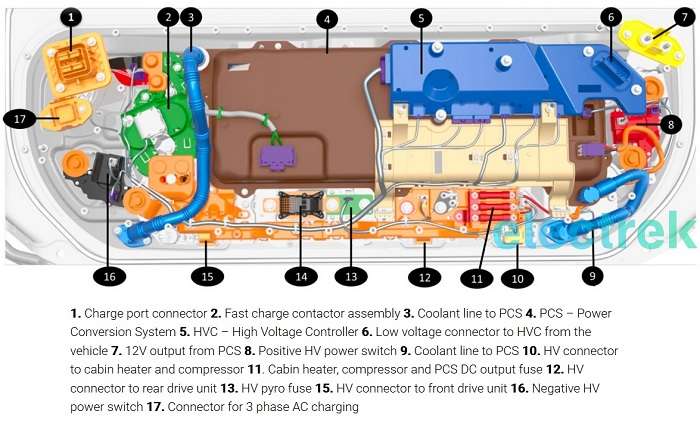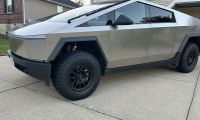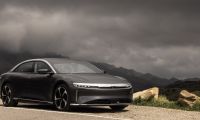Tesla designed the Model 3 battery pack to include the charger, fast-charge contactors, and DC-DC converter all in the same package. The packs also already have the necessary connectors for the upcoming all-wheel-drive dual motor option.
The automaker also incorporated some other clever designs to save weight and cost.
For example, Tesla got rid of the external battery pack heater and instead, it heats the pack only using heat provided by the powertrain even when the car is parked. How did they do this you ask?
Waste heat from the powertrain is used when the car is moving, but Tesla designed a thermal controller for Model 3 that can also use heat from the powertrain even when the vehicle is parked, like at a Supercharger for example. This is important since the charge rate drops if the battery pack is too cold.
Even when parked, Tesla’s software can send a request to the powertrain inverter to start powering up and pass the appropriate currents to the motor in order to produce enough heat to warm the cells – all while not producing any torque so the Model 3 does not move.
For a visual interpretation of all this goodness, see the screenshot from Electrek below.

The biggest advantage I see for the Tesla Model 3 is this: choice.
Standard Battery
- Starting at $35,000
- Range of 220 miles
- 0 to 60 mph acceleration in 5.6 seconds
- Top speed of 130 mph
Long Range Battery
- Starting at $44,000
- Range of 310 miles
- 0 to 60 mph acceleration in 5.1 seconds
- Top speed of 140 mph
Oh and there is the small (not so small) matter of the nationwide supercharger network. The problem for the Bolt is that traveling across the country would still require multiple accounts with multiple EV charging providers.
Now for the Bolt battery pack
The Bolt EV’s battery pack stores around three times more energy than in Spark EV, but the weight has only increased two times. The whole battery configuration is also flat and packed tight – a first for GM (see photo below).
Chevy Bolt Battery stats:
- 60 kWh of energy for over 200 miles EPA range
- battery weight 436 kg
- 160 kW power output
- 288 lithium-ion cells (LG Chem)
- 350 V nominal voltage
- eight years or 100,000 miles battery warranty
- DC fast charging capability (at least 50 kW – we don’t know yet for sure whether GM will enable higher power charging if there will be higher power chargers)
Also See: 2017 Chevy Bolt vs. Tesla Model 3 Detailed Comparison











